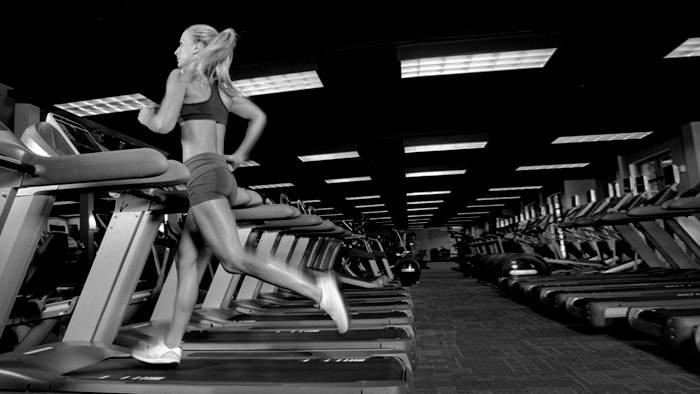I consider the treadmill a valuable tool when coaching my runners during the season and in the off season. The treadmill is not just for the rainy days or for when your favorite team is playing during your training time slot. With a little research and creativity, the treadmill can be a way to add variety, provide a quality training session and test your fitness. I make some workouts fun, others extremely challenging, but either way indoor training can be a valuable part of your training plan year round.
1. Envelope Fartlek
In college one of my favorite workouts was the Envelope Fartlek, a workout of varying intervals intended as a race simulation. To make the workout effective you need a large group of comparable athletes to initiate the intervals and simulate surges in a race. I came up with a great method to reproduce the workout on the treadmill using a playlist, I call the Musical Fartlek. I build the playlist with one artist being the intervals and any other song being tempo recovery. With my music player on shuffle, I increase to race or surge pace when interval music starts to play. The race simulation occurs due to not knowing when the surge will occur or how long the surge will last; most songs are three to five minutes. Intensity can be adjusted easily on the treadmill and the frequency of intervals can be adjusted by the ratio of surge/interval to tempo music. Sometimes the surge will follow surge which brings a complaint from the athlete if they can muster the breath to get in out, but that is no different than a races. This is a great intensity workout for an athlete to do individually or at lower intensity a fun way to incorporate speed changes into an over-distance run.
2. Hill Tempo Simulation
The second workout I like to prescribe on the treadmill is a hill tempo simulation workout. This workout was created after living in Colorado where long gradual ascent/descents were common and worked strength and then tempo speed in the same run. I found it challenging to create similar courses in the Northeast, even in hilly areas because the hills are shorter and steeper. On the treadmill I could use elevation to simulate the long gradual uphills in the first half and incorporate the tempo workout during the second half. The workout starts with a static pace at 0-2 degree elevation and following 10 minute warm-up, progresses through .5-2 degree elevation changes every 3-5 minutes. At 35 minutes I begin to decrease the elevation and increase the speed 2-3 tenths of mile per hour. Progression is achieved by increasing the initial pace during the first half and/or a higher starting elevation. When done for intensity this is a once per week workout.
3. Testing
I use the treadmill in the traditional sense for testing as well. Most often I use a ramp test establishing heart-rate zones to personalize training. Different protocols can be found online and I recommend a heart rate monitor rather than using the grip style heart rate sensors most treadmills are equipped with. The treadmill is helpful to test rehabilitation status when returning from an injury. When available I suggest the use of an impact reducing Alter G treadmill which reduces the impact via air pressure, they can be found at many training facilities or rehabilitation centers. I also see benefit in using a regular treadmill on which an athlete can stop at any point there is discomfort without having to travel back to the starting location and footing remains consistent. I have also used the treadmills to determine fitness levels when a time trial is not practical to do outside or to maintain consistent efforts or courses to compare training adaptation.
Overall I believe the treadmills are a training tool like any other that has its benefits, limitations and proper applications. Running on a treadmill does not replace or equate to running on terra firma because it lacks wind resistance and the less effort to propel the body forward. I use a reference chart that takes into account incline and speed to determine the simulated pace equal to the effort on the ground. There are many of these references online, effectiveness is best when applied consistently during training. Adjustments can be made and should be considered due to differences in the instrumentation of brands and models of treadmill. I do not go to the extent of measuring the speed of the belt, but I do make note of what treadmill an athlete uses and consistently use that treadmill for workouts. I have gained an appreciation for treadmills as a coach that I wish I had as an athlete, it would have made my training more effective and enjoyable.


